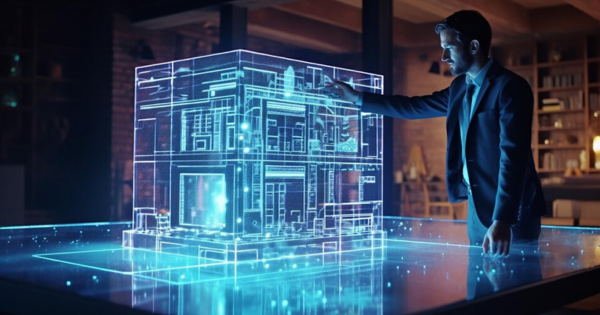BIM and AI: Shaping the Future of Architecture and Redefining the Architect’s Role

The architecture profession is undergoing a transformative shift, driven by the combined power of Building Information Modeling (BIM) and Artificial Intelligence (AI). Together, these two technologies are redefining not only how buildings are designed and constructed but also how architects envision their role in the future of the built environment.
As the construction industry moves toward digitalization, the demand for architects who can integrate technological proficiency with creative vision is becoming stronger than ever. Today’s architectural practice is no longer limited to designing aesthetic forms; it involves managing complex data, optimizing performance, and addressing sustainability and cost-efficiency concerns—all of which BIM and AI are helping to streamline.
EXPLORE ALL BIM TRAINING OPPORTUNITIES BY UDC TRAINING CENTER
The Role of BIM: Collaboration and Data-Driven Design
BIM has already established itself as a game-changer in architecture, providing a digital representation of a building’s physical and functional characteristics. Unlike traditional CAD, BIM fosters an integrated approach, allowing architects, engineers, and contractors to work collaboratively on a shared platform. Every detail—materials, energy performance, structural integrity—can be simulated and analyzed before construction even begins.
This shift toward a data-driven design process means architects are expected to become not only designers but also coordinators of information. The profession is evolving from focusing solely on drawings to managing a complex flow of digital data that supports decision-making across the entire lifecycle of a building.
AI Enhancing BIM: Predictive and Generative Design
The integration of AI into BIM takes these capabilities to a new level. AI can analyze vast amounts of project data to predict potential risks, optimize material usage, and even propose design alternatives based on specific sustainability or cost criteria. Generative design—powered by AI algorithms—allows architects to explore hundreds of possible design iterations in minutes, finding optimal solutions for structural efficiency, energy performance, and user experience.
For example, AI can automatically detect clashes in complex building systems or forecast maintenance requirements long before issues arise. This predictive capability not only saves time and costs but also improves the overall safety and durability of buildings.
Moreover, AI-assisted BIM tools can help architects balance creativity with performance. Rather than replacing human intuition, AI provides insights that allow architects to make better-informed decisions, ensuring that buildings are not just visually appealing but also functional, sustainable, and economically viable.
EXPLORE ALL BIM TRAINING OPPORTUNITIES BY UDC TRAINING CENTER
Market Demands and Professional Evolution
The global construction market increasingly demands efficiency, sustainability, and cost transparency. Clients expect faster project delivery, reduced construction waste, and buildings that meet high environmental standards. Consequently, architects who master BIM and AI are becoming highly valuable assets to the industry.
Professional roles are expanding to include expertise in digital project management, data analytics, and sustainability modeling. Firms are actively seeking architects who can communicate effectively with engineers and contractors through BIM platforms, interpret AI-driven insights, and guide decision-making processes.
This evolution also responds to broader societal needs. With cities facing population growth, climate change, and limited resources, architects must design spaces that are adaptable, energy-efficient, and environmentally responsible. BIM and AI enable architects to meet these challenges by optimizing resource allocation and supporting evidence-based design choices.
EXPLORE ALL BIM TRAINING OPPORTUNITIES BY UDC TRAINING CENTER
The Architect of the Future: A Hybrid Professional
The future architect will be a hybrid professional—part creative visionary, part digital strategist. Mastery of traditional design principles will remain essential, but proficiency in BIM and AI will be crucial to staying competitive. Continuous learning and upskilling will become a necessity, as the industry shifts toward full digital integration.
Far from replacing architects, these technologies will amplify their creative and problem-solving abilities. The architects who embrace BIM and AI will lead the transformation of the profession, shaping cities and communities that are smarter, more sustainable, and better aligned with human needs.
In this new era, the architect is no longer just a designer of buildings but a designer of intelligent systems—where every decision is informed by data, guided by technology, and inspired by human creativity.
Share:
Διαβάστε Επίσης
Σε έναν κόσμο που επιτακτικά αναζητά λύσεις για τη μείωση του περιβαλλοντικού αποτυπώματος
Η Σαγράδα Φαμίλια στη Βαρκελώνη έσπασε και επίσημα ένα παγκόσμιο ρεκόρ:
 Ελληνικά
Ελληνικά  English
English


